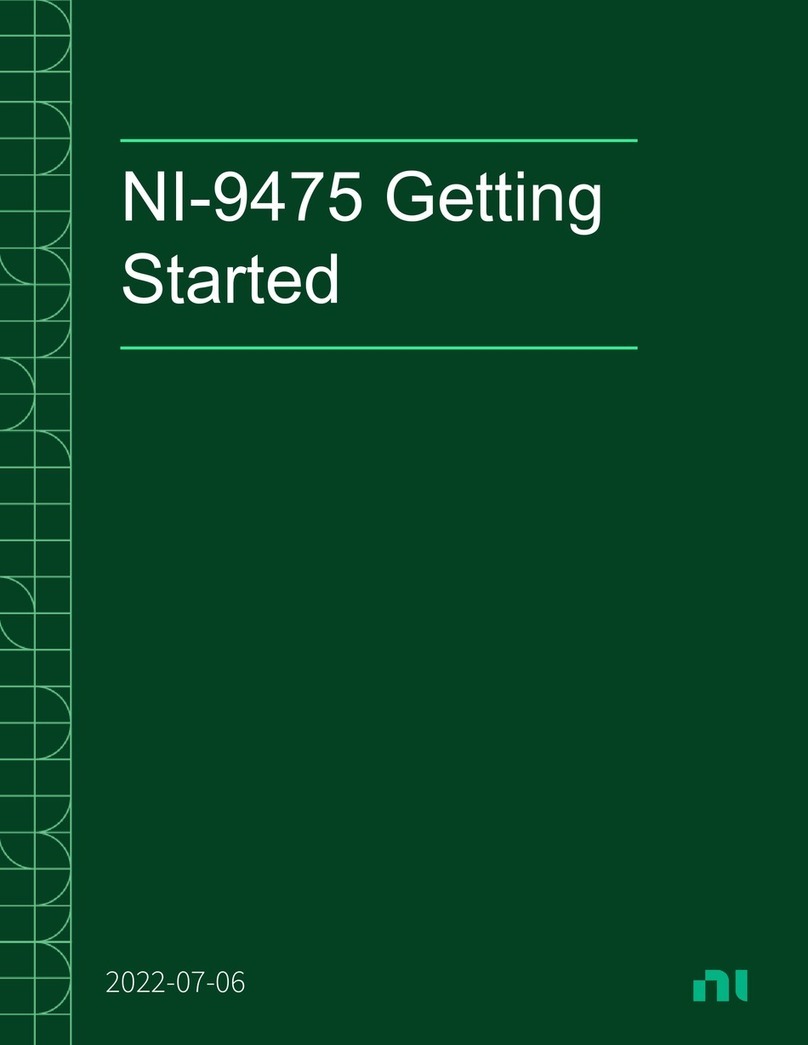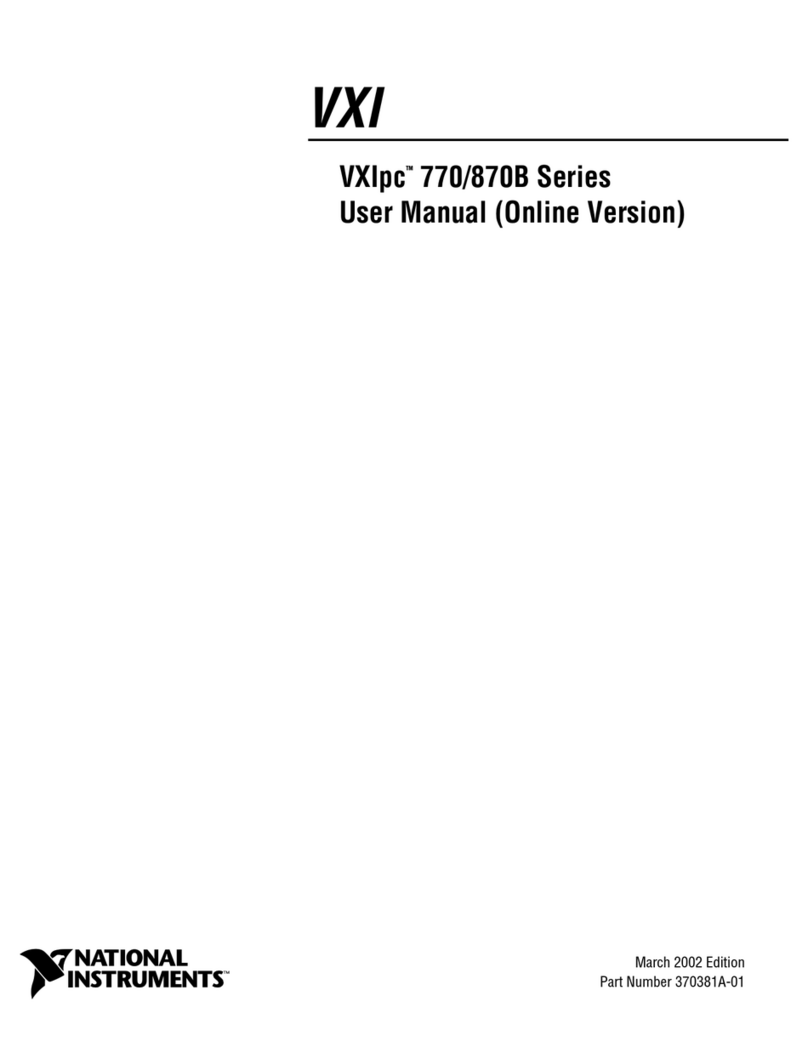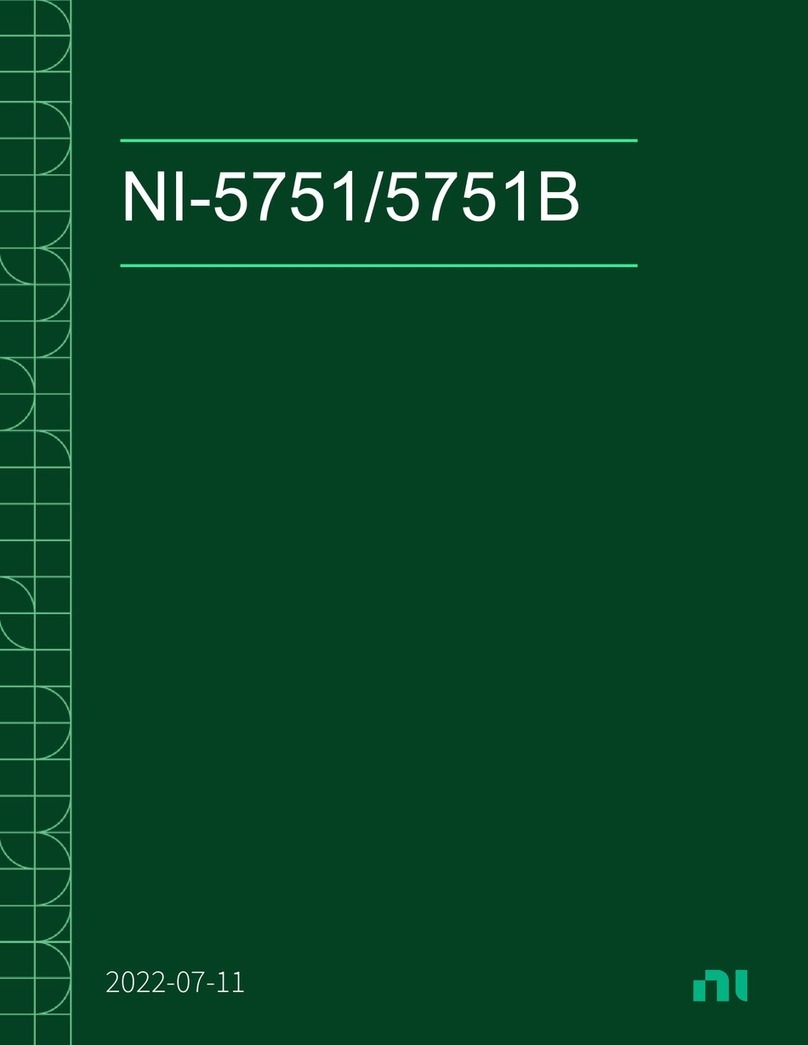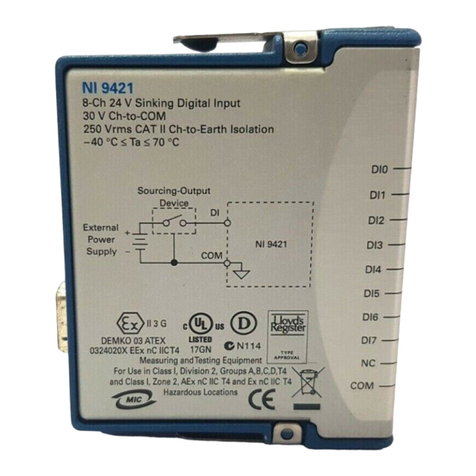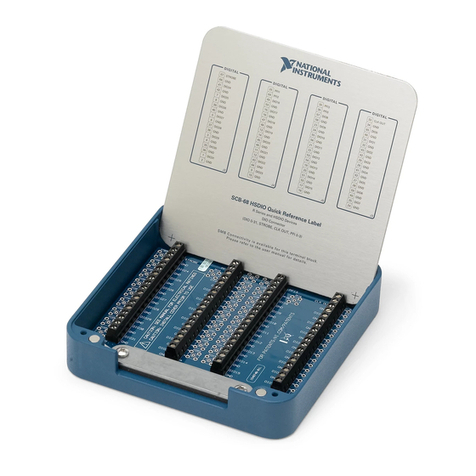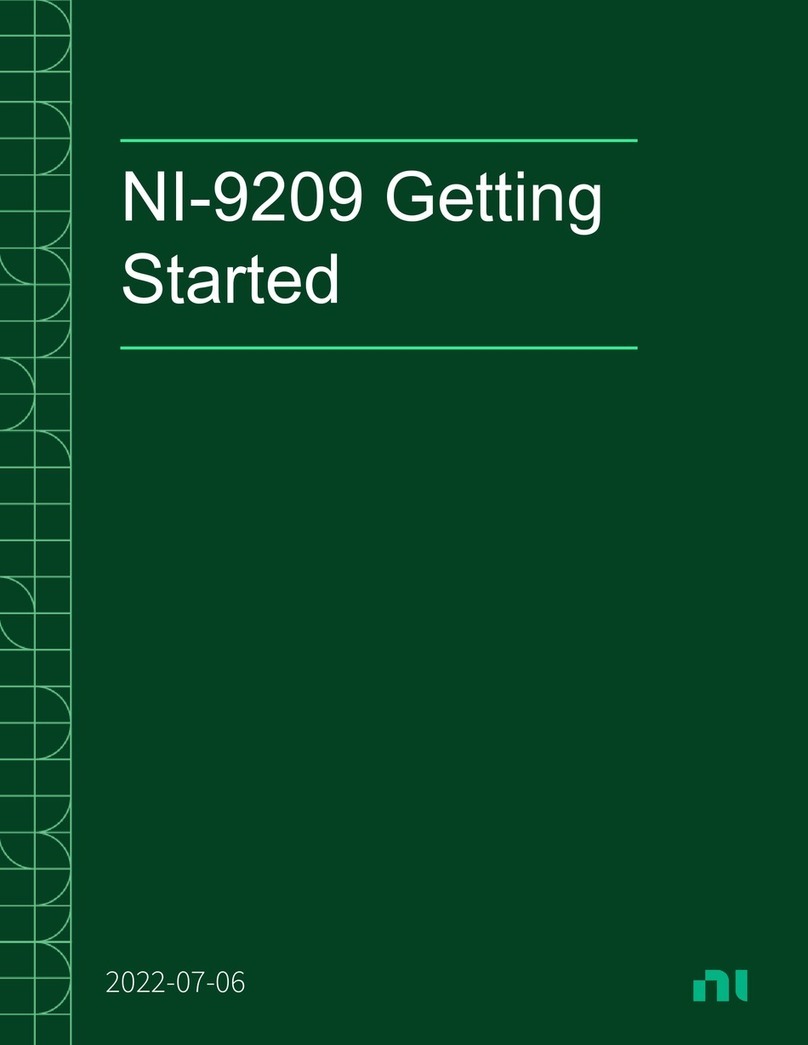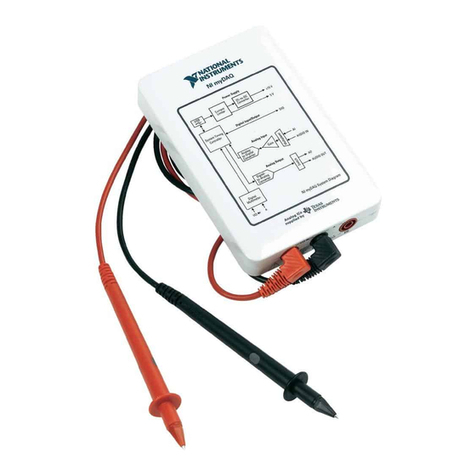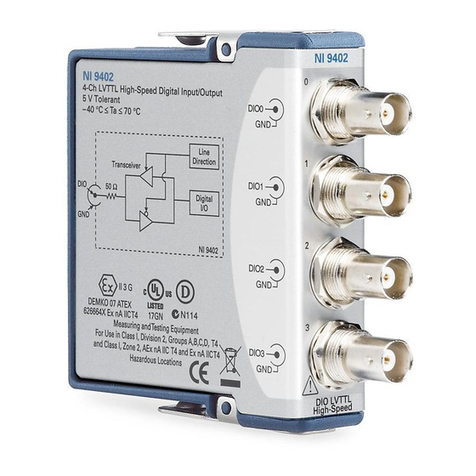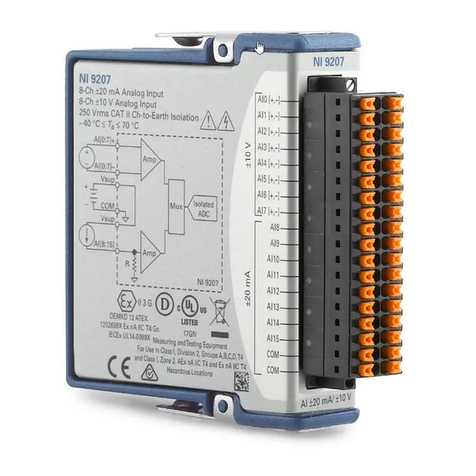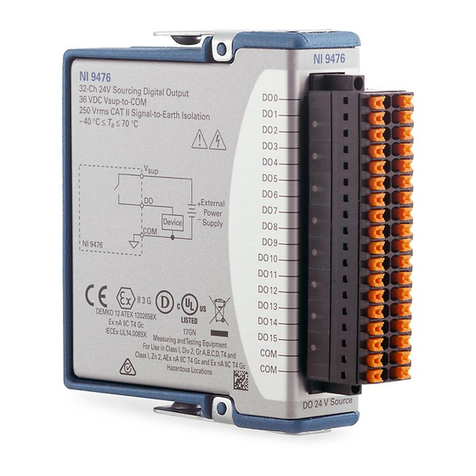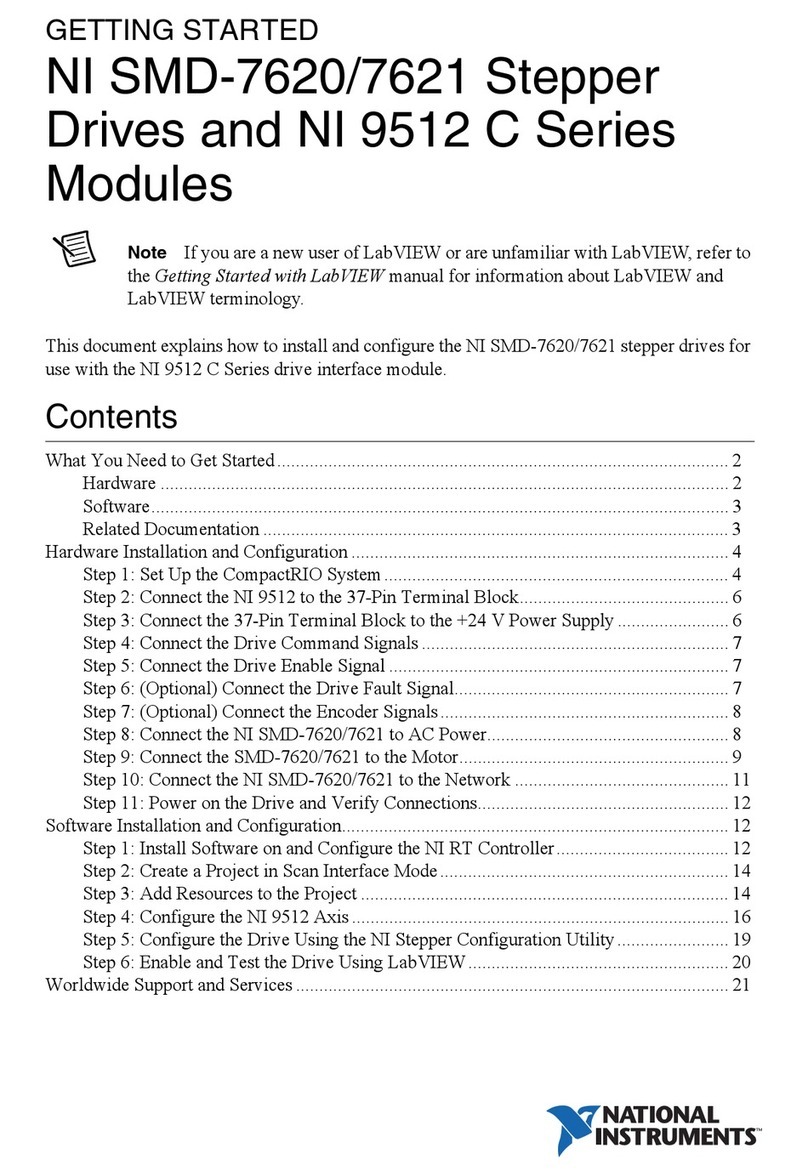
peripheral device or test object, or if the product is used in residential or
commercial areas. To minimize interference with radio and television reception and
prevent unacceptable performance degradation, install and use this product in strict
accordance with the instructions in the product documentation.
Furthermore, any changes or modifications to the product not expressly approved
by National Instruments could void your authority to operate it under your local
regulatory rules.
Notice To ensure the specified EMC performance, operate this product
only with shielded cables and accessories. Do not use unshielded cables or
accessories unless they are installed in a shielded enclosure with properly
designed and shielded input/output ports and connected to the product
using a shielded cable. If unshielded cables or accessories are not properly
installed and shielded, the EMC specifications for the product are no
longer guaranteed.
Caution Electrostatic Discharge (ESD) can damage the NI-9230. To
prevent damage, use industry-standard ESD prevention measures during
installation, maintenance, and operation.
Caution To ensure the specified EMC performance for the NI-9230 with
screw terminal, you must install clamp-on ferrite beads (part number
782802-01) in accordance with the product installation instructions. Refer
to the NI-9230 product page on ni.com for purchasing information about
clamp-on ferrite beads.
Notice To ensure the specified EMC performance, the length of all I/O
cables must be no longer than 3 m (10 ).
Cable Requirements for EMC Compliance
Select and install cables for the NI-9230 in accordance with the following
requirements:
ni.com
6
NI-9230 Getting Started
